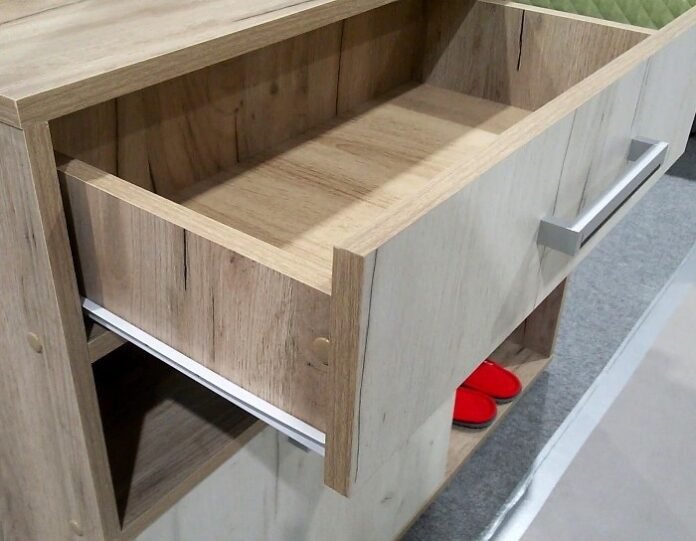Have you ever battled with a sticky kitchen drawer or watched in horror as one collapsed under the weight of heavy cookware? It’s a common problem—but an easy one to fix. The secret lies in selecting the right teflon drawer runners.
While often overlooked in kitchen renovations, drawer runners are a crucial part of everyday functionality. And when it comes to smooth, quiet, and low-maintenance operation, teflon drawer runners are a smart choice. They’re engineered for heavy use, offer better durability, and glide effortlessly compared to standard metal runners.
Let’s explore how to choose the best runners for your kitchen, from slide types and sizing to weight capacity and installation tips.
Table of Contents
Why Teflon Coating Makes a Difference
Teflon drawer runners feature a PTFE (polytetrafluoroethylene) coating, known for its ultra-low friction. This means your drawers will glide open and closed with minimal effort—even when fully loaded. The coating also offers benefits like:
- Silent operation
- Resistance to moisture and chemicals
- Long-lasting smoothness
- Minimal maintenance
They’re ideal for kitchens where drawers are opened frequently and hold everything from utensils to heavy cookware.
Types of Drawer Runners
Side-Mounted vs Bottom-Fix
Side-mounted runners: Attached to the sides of the drawer and cabinet, they’re visible when open and ideal for most uses.
Bottom-fix runners: Hidden beneath the drawer, these offer a clean aesthetic and can support heavier loads.
Ball-Bearing vs Roller Slides
Ball-bearing slides: Provide smoother motion and higher weight capacities. Great for pots and pans.
Roller slides: More affordable and better for lighter drawers.
If you want extra convenience, look for runners with soft-close or push-to-open features for added functionality.
Measuring for the Perfect Fit
Getting accurate measurements is critical. Here’s how:
- Measure the inside depth of your cabinet.
- Subtract 25mm–50mm to determine runner length.
- Don’t forget to check for any internal obstructions or cabinet face frames.
Common lengths include 300mm, 450mm, and 500mm. For a standard 600mm deep cabinet, a 500mm runner is usually perfect.
Avoid common mistakes like measuring only the drawer box or ignoring drawer front thickness. Double-check your numbers for a snug, smooth fit.
Load Ratings Matter
Drawer runners are rated for different loads:
Light-duty: 15–25kg – good for utensils or shallow drawers.
Medium-duty: 30–45kg – suitable for dishware and medium kitchen tools.
Heavy-duty: 60kg+ – perfect for storing cast iron cookware or small appliances.
If you’re retrofitting existing drawers or planning for long-term kitchen use, opt for teflon drawer runners with higher weight capacities to ensure durability.
Pre-installed vs Retrofit Runners
If you’re installing new cabinets, runners are usually pre-fitted. But in existing kitchens, retrofitting is common. Here’s what you’ll need:
- Drill and level
- Tape measure
- Mounting screws (usually included)
- Drawer slide jig (optional but helpful)
Retrofitting is cost-effective if your drawer boxes are still in good shape. Just ensure the mounting holes on your new runners align with the old ones—or choose universal runners with flexible mounting options.
Signs It’s Time for Replacement
Don’t wait until your drawer fails completely. Look out for these signs:
- Sticking or noisy operation
- Drawers sagging or misaligned
- Rust or visible wear
- Drawer doesn’t close fully
Upgrading to teflon drawer runners not only fixes these problems but also enhances drawer performance dramatically.
Smart Buying Tips
Here’s how to shop smart for teflon drawer runners:
- Choose runners made from thick-gauge steel for durability.
- Check that the Teflon coating is even and smooth.
- Look for ball-bearing mechanisms and soft-close features.
- Expect to spend $30–60 for mid-range options or up to $150 for premium models.
- Ensure the product comes with a 5+ year warranty and good after-sales support.
While cheaper runners might seem tempting, investing in quality pays off in smoother performance and longer lifespan.
Maintenance and Care
Teflon runners are largely maintenance-free, but here are a few care tips:
- Wipe with a damp cloth regularly to remove dust.
- Avoid harsh cleaners; use mild soap and water if needed.
- Don’t overload drawers.
- Check for loose screws every few months.
If you notice stiffness over time, a quick spray of silicone lubricant (never oil-based) can help refresh performance.
Final Thoughts
Choosing the right teflon drawer runners might seem like a small decision—but it has a big impact on your daily kitchen experience. From smooth operation and high weight capacity to silent closing and durability, they’re the smart choice for modern homes.
Whether you’re renovating or simply upgrading old runners, take time to measure carefully, choose the right type, and invest in quality. The result? A kitchen where drawers open effortlessly, last for years, and support everything you need—without the hassle.








